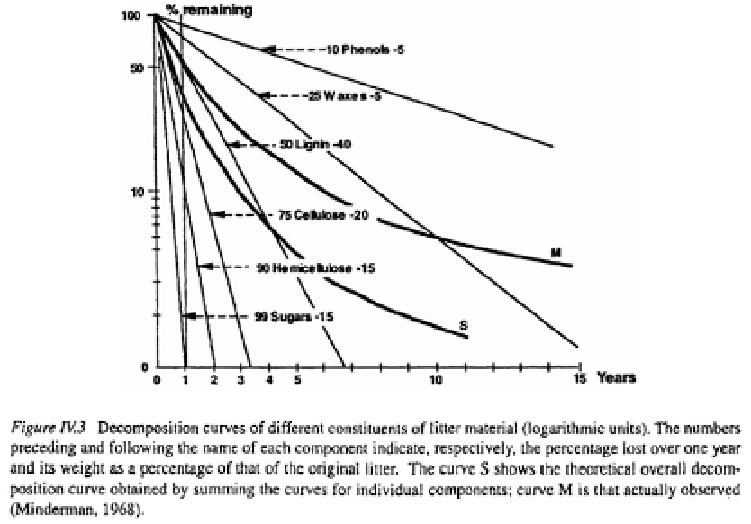Agriculture Reference
In-Depth Information
(Garay
et al.‚
1986a). Finally‚ rapid burial of slightly-decomposed material may be
effected by physical processes such as the opening of cracks in drying vertisols and
biological activities‚ particularly those of anecic invertebrates. Anecic earthworms‚
leaf and seed harvesting ants and litter-feeding termites all accumulate dead plant
materials within their burrows‚ nests and galleries; substantial proportions of annual
primary productivity may be translocated and sequestered within these biogenic
structures (Jones‚ 1990; Martin‚ 1991).
1.1.3
CHEMICAL ASPECTS: RESOURCE QUALITY AND CHEMICAL TRANS-
FORMATION DURING DECOMPOSITION
As shown in Chapter I‚ decomposing resources are made up of a wide range of
chemical substances. They differ in the relative proportions of their major constituents
i.e.
‚ lipids and waxes‚ water-soluble carbohydrates‚ hemicellulose‚ cellulose‚ lignin‚
proteins‚ phenols and other secondary plant compounds. Each of these compounds is
considered to have its own specific decomposition rate‚ and decomposition of any resource
will depend - as a first approximation - on their relative abundances. Minderman (1968)
calculated annual loss rates ranging from 99 % for sugars to 10 % for phenols (Figure IV.3).
Decomposition rates therefore decrease over time as the more-readily decomposed
materials disappear. However‚ the observed decomposition rate (M) was slower than that
predicted (S) by simply summing the decomposition rates of the individual components.
Decomposition rates may be reduced by such interactions as the tanning of cytoplasmic
proteins by phenols released from vacuoles at leaf death and by physical constraints to

